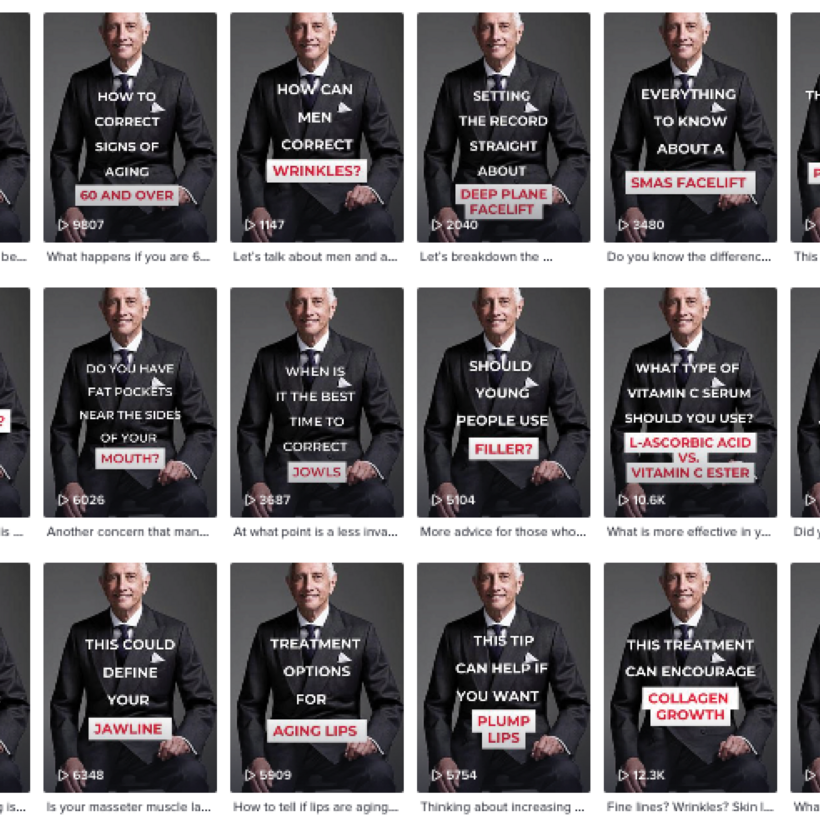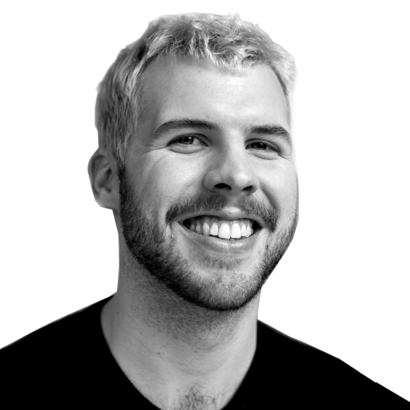On a recent Monday afternoon, the plastic surgeon Dr. Gerald Imber sat in an operating room surrounded by a menagerie of face-lifting equipment, a smartphone on a tripod, and a ring light rendered totally useless by the room’s optic-white illumination that spared no wrinkle or shadow.
On the other side of the tripod stood Lindsay Tansky, the clinic’s director of marketing. After Tansky counted down from three, Dr. Imber began to address his TikTok followers in a manner both warm and clear, like a spring afternoon. “Hi, I’m Dr. Imber, and it’s crêpey-skin day.”
Dr. Imber’s guiding philosophy is prevention, but his specialty is renovation. He might be the Dalai Lama of the contemporary face-lift. “I’m probably the least academic of the academic plastic surgeons, but technically the best,” he told me. “And I’d probably quit if I thought anybody was better than I was.” In his book published in 2017, The New Youth Corridor, he estimates having performed some 15,000 aesthetic procedures, including 4,000 face-lifts, throughout the course of his career, nipping and tucking on Manhattan’s Upper East Side (as well as briefly in Los Angeles). Lately, he has brought his dharma to digital audiences; a recent TikTok sermon, on Imber’s long-held belief that running ages the face, was viewed more than three million times.
“The Youth Corridor” refers to more than just his 1997 book The Youth Corridor, or its 2017 edition, The New Youth Corridor, or the official trademark for his product line. The Youth Corridor is a place in time, as in: “An effective skincare routine and a maintenance schedule… can keep you happily within the Youth Corridor, even as your contemporaries grow old around you” (The New Youth Corridor). It’s also a place on Earth, a few blocks from the Metropolitan Museum of Art (the Youth Corridor Clinic). From a wood-paneled reception area, rooms that facilitate prevention and renovation line a serpentine hallway, a feat of privacy-minded interior design. It is impossible, at any angle, to see what is around the corner.
The same could be said of the cosmetic sciences. In the first edition of The Youth Corridor, Imber decried all skin-care products as hogwash, but the following decade saw the ascendance of innovations such as alpha hydroxy acids, along with Botox—enough to necessitate a new edition of his book. Imber doesn’t mind playing with new tools. When he discusses the particulars of his social-media channels, the doctor’s face flickers with genuine amusement. He finds it puzzling that a video of him setting down a box of croissants in his office would captivate an audience of one, let alone an audience of thousands, but it’s also a little bit thrilling too.
He might be the Dalai Lama of the contemporary face-lift.
The TikToks, to be clear, were Tansky’s idea. She comes to the Youth Corridor every week, in black scrubs and beachy waves, to prompt Imber and press the Record button. These prompts are fully formed questions, or single words or phrases loaded with cosmetic meaning, such as “Scars?” Each one activates Imber like a token, who responds with a concise but information-dense sound bite. A single session produces about a week’s worth of video content sprinkled out per business day, and lasts about as long as Imber’s stamina for rapid-fire, stream-of-consciousness lectures, or until his next appointment—usually around 15 minutes.
Imber’s vast reservoir of experience working with human skin—the everlasting font from which his wisdom flows unimpeded, to be bottled in short-form videos and distributed to the thirsty masses—suggests his age, which is: No comment! Imber was born in New York. He graduated medical school from SUNY Downstate in 1966, was a resident at Weill Cornell, and his practice began, in part, on Broadway. Some of his first patients were stage-wig makers and hairdressers, who referred him to their networks.

He claims to have no beauty rituals of his own, unless you press a little, and then he spills like milk. He uses the Ultimate Antioxidant Boost serum from his product line. “We have, I think, about seven or eight products,” he explained. “Three of them are great. The others aren’t any worse than anybody else’s.” He knows the serum is good, he says, because people have copied the formula, and there’s no better compliment in the marketplace. He doesn’t apply hair gel, and he shaves with a brush and lather. His signature scent is a discontinued aftershave from Chanel called Allure Edition Blanche that he buys on eBay.
“O.K., next question,” Tansky said. “What are two signs it’s time for micro-suction?”
“Oh, boy,” Imber said, and he glanced at me as if to transmit a message about micro-suction I did not understand.
Another half-second passed and he was ready, turning to the camera with a grin. “Hi, it’s Dr. Imber. The question is: What are two signs it’s time for micro-suction?” (In summary, the first is the possession of a double chin, and the second is the lack of a visible jawline.) “A little incision gets rid of those tiny incipient jowls immediately.” And you’re back in the Youth Corridor.
“I’d probably quit if I thought anybody was better than I was.”
The Youth Corridor is not a destination but an embarkation point. Most people don’t realize they’ve departed until after they’re long gone. As Imber explained to me, “I believe fervently that a lot of the things we do should apply to the youngest of people. The minute you call yourself an adult, you’re on the downhill slide.” As he wrote more hauntingly in 2017, “Your efforts to deal with the process will bear fruit in a future you haven’t yet considered.”
Skin wrinkles, often the target of aging concerns, are permanent once they form, so the most effective time to undergo preventative measures is before they’ve arrived. Imber urges young people to learn about cosmetic procedures such as micro-needling, which can help delay them—his videos about preventative aging are popular on TikTok, where about half of all users are under the age of 30.
Imber, along with his director of marketing, emphasizes that his videos provide information, not consultation or, God forbid, solicitation. At the same time, they’d both like to humbly suggest that, should one decide to listen to the advice of a plastic surgeon on the Internet, one might be wise to visit @geraldimbermd, on TikTok or Instagram. The doctor applies a soapbox metaphor to social-media pages. “So many people are using the soapbox inappropriately, almost equally, and one has a chance to do things the right way. I think it’s a great thing to do.”
“The minute you call yourself an adult, you’re on the downhill slide.”
Imber is funny and frank, with a handsome smile. In his office, at the very end of the Youth Corridor’s long winding hallway, every surface that doesn’t display a family photo is crowded with books and papers. In the late afternoons and on weekends, Imber writes, and prolifically: he’s produced a handful of beauty books, biographies, novels and even one podcast forthcoming. Is there anything the doctor can’t do? Yes, but only one: speak foreign languages.
“I can understand jokes in French. I can understand almost everything in Italian. I used to know German. But I can’t speak any of them.” He’s embarrassed about this. “The bar is pretty high for me with everything. And I just don’t want to do it poorly, so I just prefer not to do it.”
He’d prefer to apply himself tirelessly to one of his other skills, such as writing prose and sculpting live human tissue. If his growing audience indicates what a growing audience tends to indicate, he is also highly watchable; watching him, it is difficult to say whether he has a natural talent for on-camera work or just speaks with the learned confidence of a very experienced person speaking from experience. It’s simply easier to assume both.
Imber said, “It’s just straight talking, and then they take the microphone off.”
He started laughing, while Tansky added, “Or not!”
Brennan Kilbane is a New York–based writer. He is originally from Cleveland, and his interviews and essays have appeared in GQ, New York magazine, and Allure, where he was recently on staff as a features writer





